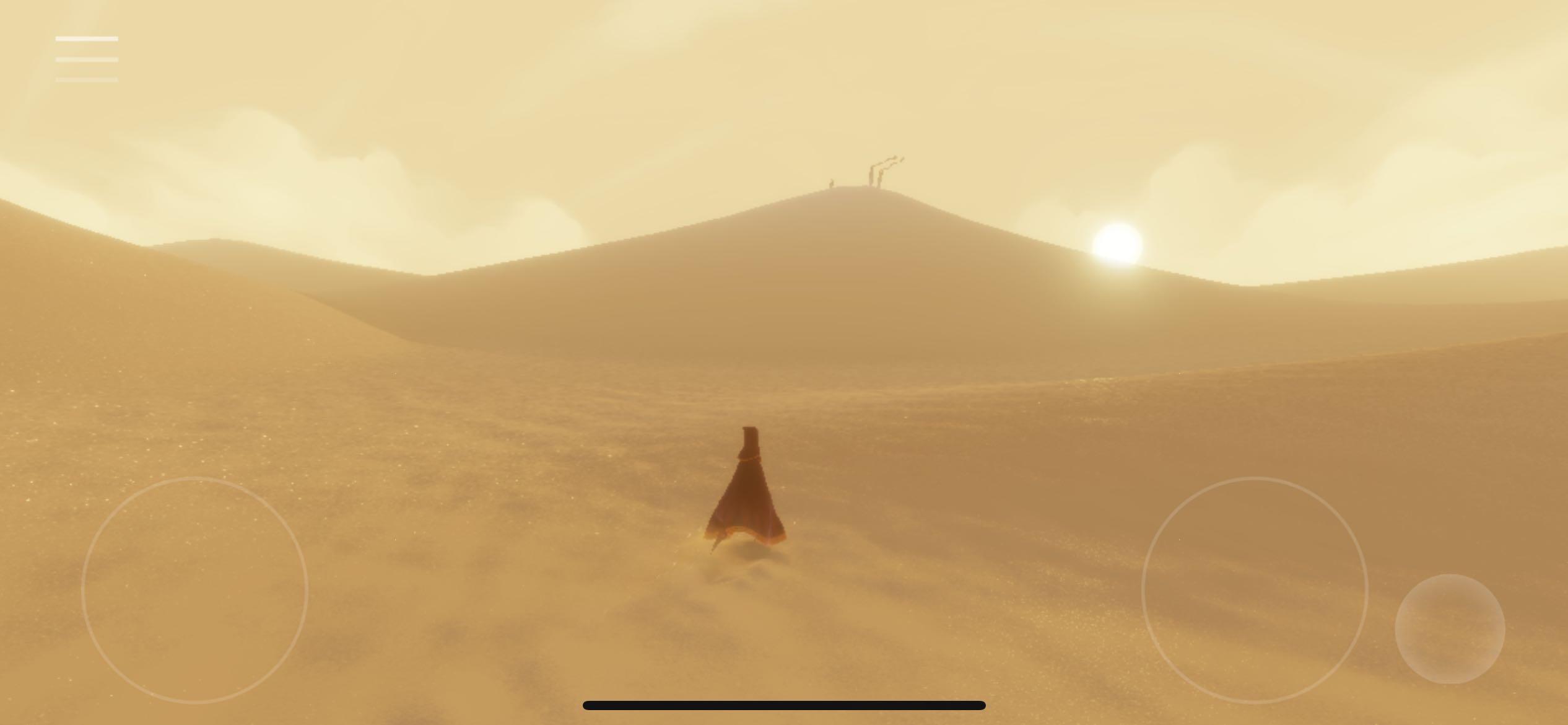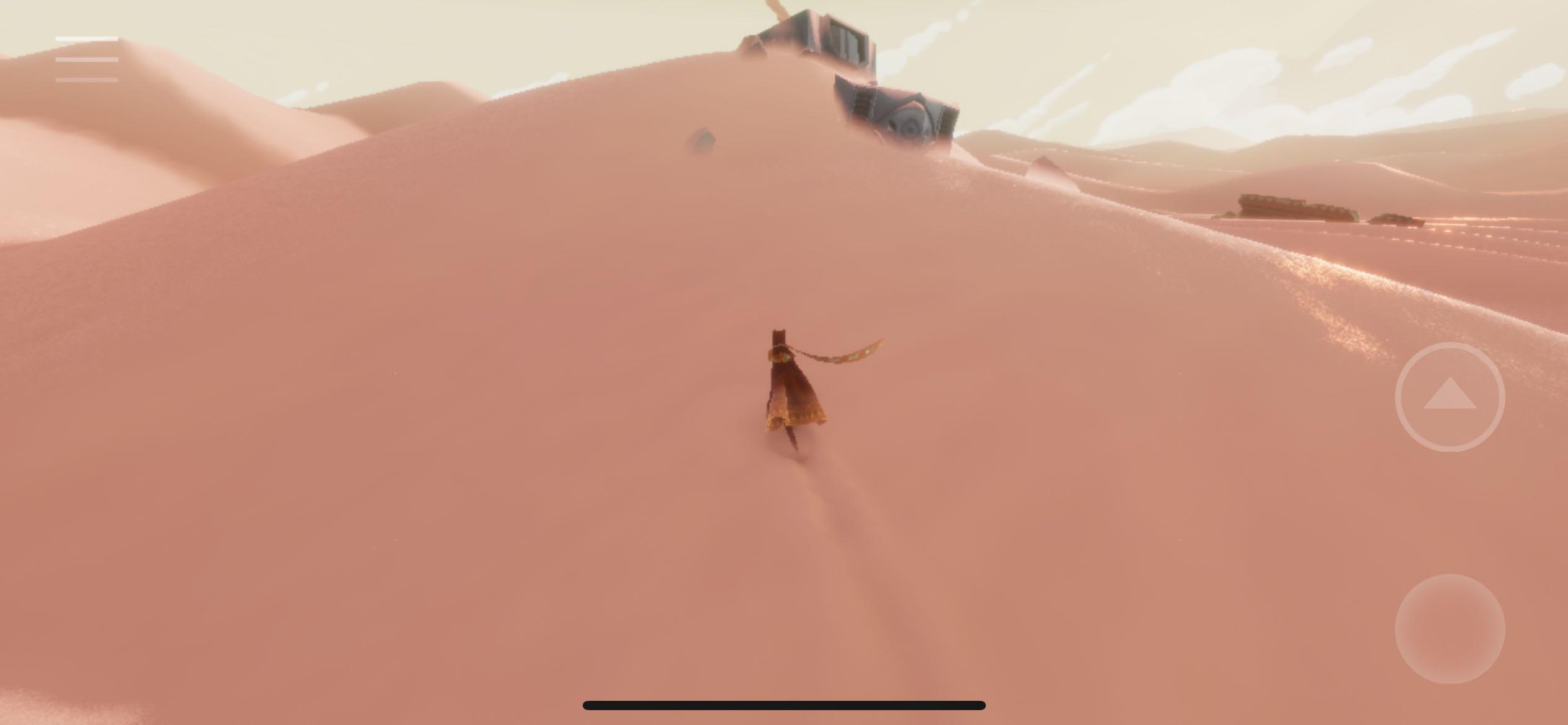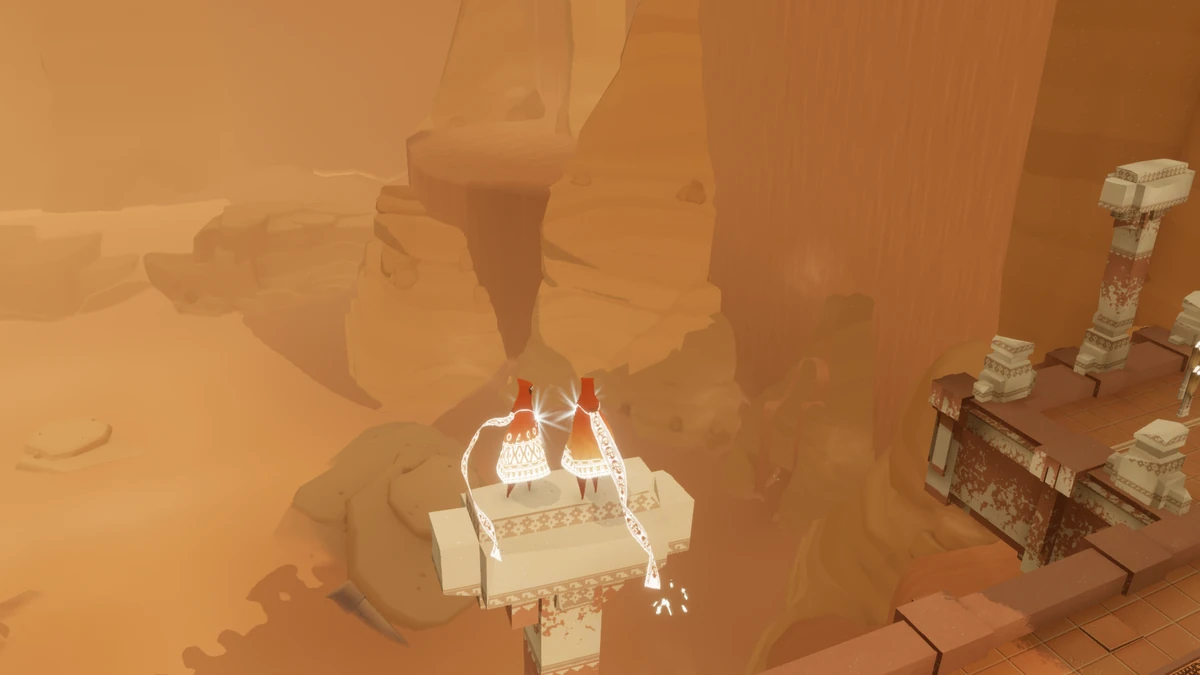For this critical play, I played the walking simulation game Journey. It was created and developed by the Thatgamecompany. It was originally on PlayStation, available on multiple platforms including PC. My experience on IOS added a distinct experience due to the touch-based interface, which made me feel more intimate and direct compared to using a controller on a console. When I played the game, I felt like the target audiences could be both gamers and non-gamers, captivating audiences of all ages with its simplicity and the universal appeal of its themes. The game is particularly attractive for those who appreciate storytelling that is open to interpretation and emotional exploration.
Journey uniquely employs walking as not just a mode of transportation but as a fundamental narrative device. Through its simple yet profound walking mechanics, the game weaves a story of exploration, connection, and personal and communal evolution. The act of walking in “Journey” surpasses mere movement, becoming a metaphor for the traveler’s life journey, emphasizing the themes of struggle and companionship.
In Journey, walking serves for MDA, which is a core mechanic that deeply intertwines with the game’s dynamics and aesthetics, crafting a unique narrative experience through each step taken by the player. This simplistic action of walking is not only walking to the next destination but it is also layered with symbolic meaning and emotional depth, reflecting the game’s themes of life’s journey and the connections we make along the way.
It is primarily a single-player game but with anonymous multiplayer elements (which means that there is a possibility that you can encounter other players along the Journey). Players can take the procedures of navigating landscapes, solving light puzzles, and gliding over dunes to travel toward a distant mountain and uncover environmental narratives and ancient scripts. These formal elements combine to guide the emotional and narrative rhythm of the game.
The mechanics of the Journey are centered around the basic ability to walk, glide, and interact with the environment through non-verbal cues (e.g. the musical chimes the player can trigger). The walking mechanic is straightforward—players press forward to move(Fig 1)—but its implementation in various contexts adds layers of narrative significance.
 Fig1 – Left-hand control press forward to move
Fig1 – Left-hand control press forward to move
For example, there is a glide and scarf mechanic, the scarf moves as my movement to create a more realistic feel of walking and movement, and as I collect more symbols along the walk(Fig 2 and 3), my scarf grows longer, allowing it to glide for extended periods. Walking then transitions into flying, symbolizing metamorphosis and ascension in the journey.

 Fig2/3 – The scarf becomes longer as more symbols collected
Fig2/3 – The scarf becomes longer as more symbols collected
The dynamics of Journey emerge from how players interact with these mechanics in the game’s environment and with other players. The player can interact with the environment, by walking through different terrains like dunes, snowy mountains, and ancient ruins affects the player’s speed and movement style. For example, as a player, I will walk more slowly through deep sand and struggle against harsh winds in snowy areas, which enhances the feeling of hardship and struggle, making the journey feel more difficult and reflective of life’s challenges. As figures shown below, show different movement actions and looks for the player when I navigate through different environments.

 Fig4 – down and up mountians
Fig4 – down and up mountians Fig5 – jump ruins
Fig5 – jump ruins
 Fig6 – snow
Fig6 – snow
The player can also have the possibility to have multiplayer interaction as shown in Fig 7. Occasionally, another player may join the journey, but it did not happen all the time. Here, walking together becomes a shared experience, a silent companionship that enhances the sense of fellowship and support. This dynamic is particularly poignant when both players time their chimes to recharge each other’s scarves, facilitating longer flights together. I only encountered another player once during my second round of the play, and we separated afterward, but it already created a surprise and companionship while I walked and traveled along for a long time in the adventure.
 Fig 7 – other players encountered
Fig 7 – other players encountered
Then the dynamics emerge the aesthetics of Journey which are impacted by the act of walking, as it directly influences the emotional and visual storytelling, and creates a fun of narrative and discovery. Narrative in Journey is conveyed primarily through visual and auditory elements, rather than text or spoken words. The game begins in a vast, sunlit desert where the player is drawn towards a mountain in the distance. This setting not only establishes the journey’s goal but also its solitary nature. The ruins and buried cities the player explores hint at a lost civilization, creating a narrative depth that invites speculation and interpretation. Discovery is intertwined with the environment, encouraging players to explore and interact with the world around them. The game rewards curiosity with new insights into its world, hidden areas, and occasionally interactions with other anonymous players, just as the analysis in with the environmental and multiplayer interaction from the dynamics.
Through this analysis, Journey uses the act of walking not just as a means of navigation but as a powerful narrative tool that tells a story of life, hardship, and companionship, making every step in the walking a part of the storytelling itself.




